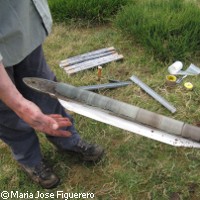Study sheds light on Antarctic dust mystery
Retreating Patagonian glaciers are behind the abrupt changes in the amount of dust reaching Antarctica, new EU-funded research reveals. The study, published online by the journal Nature Geoscience, was partly supported by a Marie Curie Fellowship from the EU. The findings add to scientists' understanding of past climate change and should help researchers to refine their predictions of what may happen in the future. Ice cores drilled from the massive Antarctic ice sheet reveal sudden changes in the amount of dust blown onto the remote continent in the past. These changes were thought to reflect environmental conditions in the areas supplying the dust. Analyses of the dust in the cores suggest that its origins lie in South America. In this latest study, the researchers looked at lake sediments from the southern tip of South America and compared them with the dust from the Antarctic ice cores. Their data, which stretches back over 80,000 years, highlight a close link between the advance and retreat of glaciers in the region and the amount of dust landing on Antarctica. In short, when the Patagonian glaciers retreated, the amount of dust reaching the Antarctic dropped off sharply. Glaciers contain a large amount of dust particles. When the glaciers were at their longest, the meltwater and sediment were deposited directly onto barren, windy plains that were criss-crossed with small streams of meltwater. As the amount of water running off the glacier fluctuated, parts of the plains regularly dried out, allowing the strong winds which characterise the region to whip up the dust and lift it high up into the atmosphere. From there it was transported across the Southern Ocean to the Antarctic. However, when the glaciers retreated, a lake was formed at their end. When this happened, the meltwater and sediment were discharged directly into the lake, thereby trapping the dust and preventing it from reaching the plains where the wind could get at it as soon as it dried out. This explains why the amount of dust reaching Antarctica fell every time the Patagonian glaciers retreated. 'Ice cores from the Antarctic ice sheet act as a record of global environment,' commented Professor David Sugden of the University of Edinburgh in the UK. 'However, the dust levels showed some sudden changes which had us puzzled - until we realised that the Patagonian glaciers were acting as an on/off switch for releasing dust into the atmosphere.'
Countries
United Kingdom



